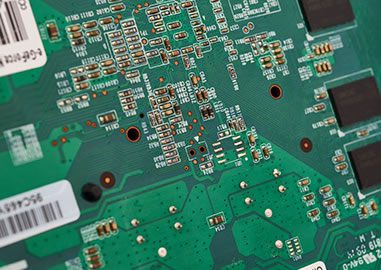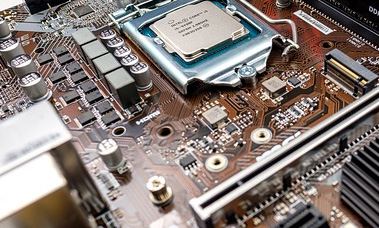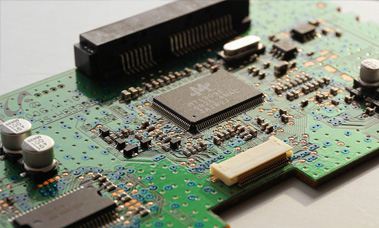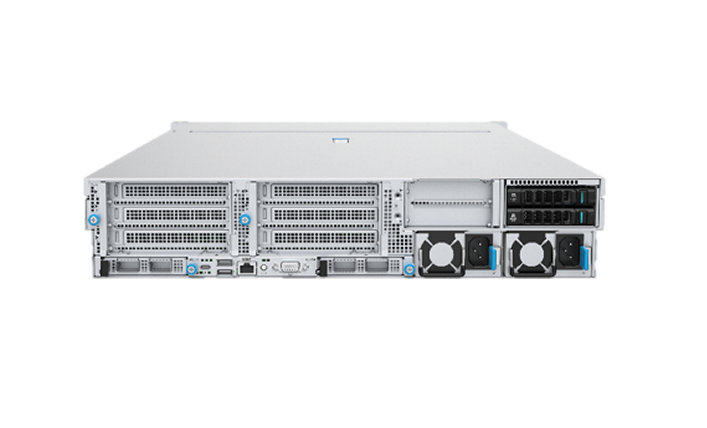.png)
-
 Ultimate Performance
Ultimate Performance· Single-node read throughput reaches up to 40GB/s, with random IOPS exceeding 200K, fully unleashing the performance potential of all-flash storage.
· Supports RDMA (RoCEv2 / InfiniBand) and high-speed Ethernet interconnection, and achieves microsecond-level access latency with a proprietary high-performance client.
· Deeply optimized IO path reduces CPU overhead and improves end-to-end throughput efficiency, specifically designed for high-concurrency workloads such as AI and HPC. -
 High Reliability and High Availability
High Reliability and High Availability· Supports mixed configurations of multiple replicas (3/4 replicas) and erasure codes (N+2, N+3), flexibly meeting the reliability requirements of different services/workloads.
· Fully redundant architecture eliminates single points of failure, ensuring business continuity and application transparency even when hard drives or nodes fail.
· Supports end-to-end Checksum and data integrity verification, automatically detecting and repairing silent data corruption.
· Enables automatic data reconstruction after a failure and supports priority adjustment, ensuring stable performance for critical services. -
 Linear Scalability
Linear Scalability· Supports horizontal scaling up to a maximum of 8192 nodes, with performance and capacity growing linearly as the number of nodes increases, seamlessly supporting the elastic development of services.
· A single file system can reach a capacity of over 200PB, and a single directory supports more than 1 billion files, meeting the needs of ultra-large-scale unstructured data scenarios.
· Enables online hot expansion New nodes are automatically added to the cluster and data is balanced, with no service interruption or application awareness. -
 Easy Maintenance and Centralized Management
Easy Maintenance and Centralized Management· Provides dual management modes (graphical GUI and CLI), supporting unified configuration and monitoring across clusters.
· Supports one-click deployment, batch configuration, and rolling upgrades, significantly reducing O&M (Operation and Maintenance) complexity.
· Monitors key indicators (node CPU, memory, network, disk I/O, and latency) in real time, with support for SNMP and email alerts.
· Supports fault domain isolation and custom data distribution strategies to enhance system resilience. -
 Symmetric Distributed Architecture
Symmetric Distributed Architecture· Adopts a symmetric distributed architecture where all nodes possess both metadata and data processing capabilities. This eliminates the need for an independent metadata server, thus removing performance bottlenecks and single-point risks.
· Metadata is distributed globally with dynamic load balancing, enabling efficient retrieval and rapid location of tens of billions of files.
· The architecture features high parity—any node can provide complete services, making system expansion more flexible and management simpler.
· Built on a unified hardware platform, it delivers high performance and scalability, significantly improving resource utilization and deployment efficiency. -
 Multi-Protocol Converged Access
Multi-Protocol Converged Access· Supports NFS, CIFS/SMB, POSIX, HDFS, MPI-IO, HTTP, and container CSI interfaces, with multiple protocols coexisting in the same storage pool.
· File and big data applications can share data without replication, breaking protocol silos and improving collaboration efficiency.
· Compatible with mainstream parallel computing frameworks such as OpenMPI and MPICH2, it seamlessly integrates into high-performance computing environments. -
 Advanced Data Management
Advanced Data Management· Supports a globally unified namespace, enabling a logically centralized yet physically distributed unified view across nodes, cabinets, and sites.
· Features a built-in intelligent tiering engine that automatically schedules data movement across different NVMe tiers based on access frequency, improving performance utilization.
· Supports automated data lifecycle management (ILM) based on policies such as time, capacity threshold, and access frequency.
· Supports data compression and deduplication, effectively reducing storage consumption and improving space utilization. -
 Cross-Regional Collaboration
Cross-Regional Collaboration· Leverages AFM (Active File Management) technology to enable cross-data center data caching and intelligent routing.
· Remote sites can access high-frequency data locally, reducing WAN (Wide Area Network) bandwidth pressure and ensuring a smooth collaboration experience.
· Data changes are synchronized in real time, maintaining consistent views across multiple locations and supporting efficient collaboration among distributed teams.
- Application scenario
- Technical specification
| Name | Specifications |
| System Architecture | Fully Symmetric Distributed Architecture |
| Maximum Node Scalability | 8192 |
| CPU per Node | 2 * Intel |
| Memory per Node | Up to 2TB Supported |
| System Disks per Node | RAID 1, 2*480GB SSDs |
| Data Disks per Node | 24 x 2.5-inch Drives |
| Recommended Typical Configuration per Node | ≥ 16 x NVMe SSDs |
| Network | 10/25/100/200/400 Gb/s Ethernet, 100/200/400 Gb/s InfiniBand |
| Power Supply Type | 1*AC+ 1*AC |
| Redundancy Strategy | Supports 3-way/4-way Replication, N+M Data Redundancy (e.g., Erasure Codes 4+2, 4+3, 8+2, 8+3) |
| Data Storage Optimization | Deduplication, Compression, Thin Provisioning, Small File Aggregation |
| Data Protection & Recovery | Remote Replication, Off-site Disaster Recovery, Snapshots, Cloning, Recycle Bin |
| Data Security & Access Control | Encryption, Enhanced ACLs, Multi-tenancy, WORM (Write Once Read Many) |
| Storage Management & Operations | Quota Management, QoS (Quality of Service), Intelligent Disk Prediction, Health Check, Reporting, Auditing |
| Data High Availability & Performance Enhancement | Active-Active, Multi-Source Zero-Copy, Soft Copy |
| Data Retrieval & Organization | Metadata Retrieval, Object Aggregation |
| System Monitoring & Health | Sub-health Detection, Kernel Client |






.jpg)

.jpg)









 0571-82835676
0571-82835676 login
login CH
CH
 Product
Product consult
consult.png)

.jpg)
.jpg)
